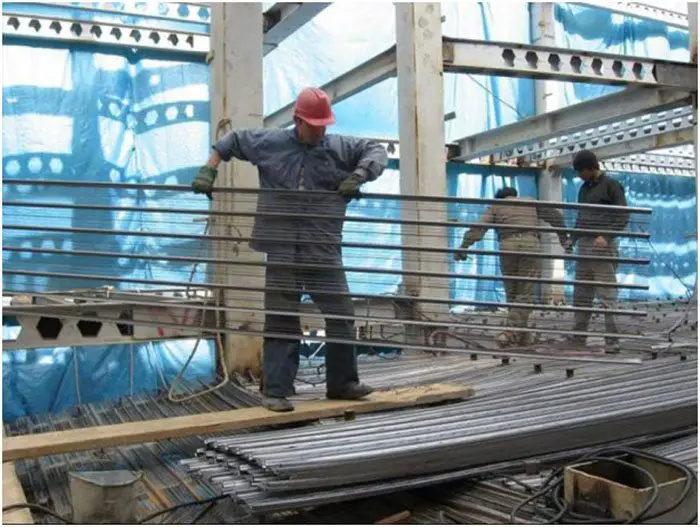With the fast economical growth taking place in Africa, the only way to meeting delivery deadlines in construction projects, taking into account the serious skills shortage and lack of building materials, is through the use of innovative building solutions.
New technology in construction helps in reduction of building costs, speedy completion of projects and elimination of much labor and intensive use of construction equipment that tie down to high operating costs.
Introducing Roofix
In the construction of composite concrete floors of cold-formed steel structures, corrugated steel decks are used.
Temporary formwork for concrete floors and slabs is costly and time consuming since it involves erection of supports that also require assemble and disassemble. Using Roofix in place of decks allows quick permanent formwork erection and building above the slab is within days instead of weeks.
Roofix permanent formwork allows you to build non-load-bearing concrete walls in high rise buildings, steel structures, light steel frame structures and perimeter walls. Roofix is offered by Roofix Africa’s technology, a company based in South Africa. The technology has been applied in many countries around the world.
Roofix (first generation) is an in-place formwork for concrete. It is made of 0.70 and 0.80mm thick steel strips of 500mm width and its material is in accordance with DIN 1623-1 (ST12). Roofix consists of seven V-shaped ribs with a depth of about 18mm. The material between the ribs is slotted and expanded, forming strips of meshed herringbones. The distance between the ribs is about 135mm and the overall width of Roofix is 81±1cm.
According to Henri Pereira owner Zenspaces and Roofixafrica who are the authorized distributors of Roofix in Africa, due to Roofix’s flexibility, architects are more likely to think out of the box and use it to create truly beautiful structures. He advises that Roofix is a better alternative to traditional bricks and concrete blocks, which are often in short supply throughout Africa, and when they are, quality is usually an issue.
Installing Roofix Formwork
- Laying Roofix on Floor Beams: Roofix formwork must be placed on floor beams perpendicular to the axes of the beams. They can be lifted from floor to floor by hand since they are light.
- Installing reinforcement mesh
- Concreting.
Permanent walls are also being built using Roofix by erecting the structure and plastering with mortar.
Contributor,
Henri Pereira,
Owner Zenspaces and Roofixafrica
Johannesburg, South AFrica
www.roofixafrica.com and www.zenspaces.co.za

